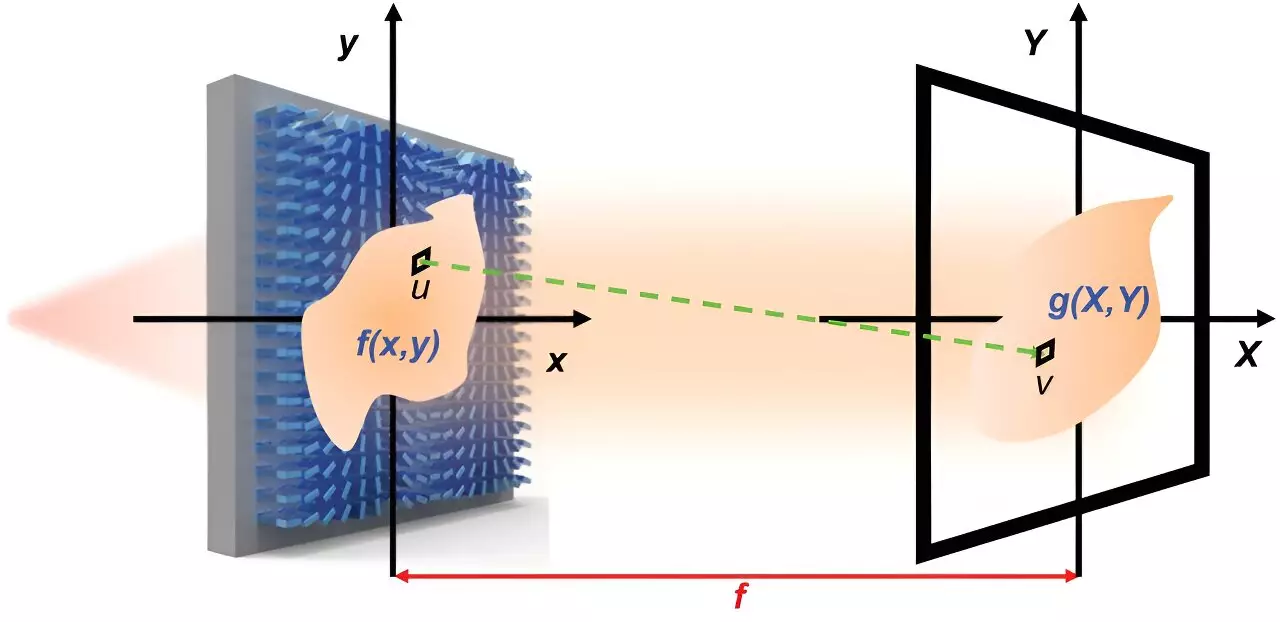The world we perceive through our eyes is a complex tapestry of visual information. On a cold, sunny day, as you drive along a rural road flanked by snow-covered fields, your eyes effortlessly process the scene, capturing individual objects of interest while the rest of the scenery blurs into the periphery. This remarkable ability inspired a team of electrical engineering researchers at Penn State to create a groundbreaking innovation — a metasurface that mimics the image processing power of the human eye. In a recent publication in Nature Communications, the researchers unveiled their optical element, composed of nanostructures positioned at varying angles, which has the potential to revolutionize artificial intelligence (AI) systems and image processing capabilities.
Artificial intelligence systems often require substantial computing power and energy, leading to slow image processing and object recognition. In stark contrast, the metasurface, akin to a glass slide, offers a power-efficient solution by preprocessing and transforming images before they reach the camera. Led by Xingjie Ni, associate professor of electrical engineering and computer science at Penn State, the research team demonstrates how this miniature optical element can enable computers and AI systems to process images with minimal power consumption and data bandwidth.
The metasurface operates by converting images from the Cartesian coordinate system, where pixels are arranged in straight rows and columns, to the log-polar system, characterized by a bullseye-like pixel distribution. This transformation, similar to the way light receptors within our eyes perceive and prioritize visual information, results in denser pixels for central, focused features and sparser pixels for the peripheral regions of the image. Consequently, the metasurface highlights the crucial elements of a photo while minimizing the focus on less important aspects, conserving valuable data bandwidth.
Placed in front of a camera, the metasurface intercepts incoming light, imparts a log-polar transformation to the image, and subsequently digitizes it for further processing by a computer. Utilizing nanoscale structures that manipulate the path of light, the metasurface operates effortlessly, harnessing the speed of light without requiring any additional power source. Xingjie Ni explains, “As an image of an object can vary in size or orientation, it is desirable to preprocess images to make them resistant to scale and rotation changes. This preprocessing helps AI applications more easily recognize them as the same object.” Furthermore, by replacing the metasurface with an alternative design, the log-polar image can be seamlessly reverted to its original Cartesian coordinates.
Read More: The Therapeutic Benefits of Low Doses of LSD
The invention of the metasurface unlocks a wide array of potential applications in various fields. Researchers envision its implementation in target tracking and surveillance systems, enabling the mapping of vehicles’ movements across urban environments. The metasurface serves as an integral component in tandem with AI systems, acting as a preprocessor, thereby facilitating streamlined recognition of the same car captured by multiple street view cameras. Beyond surveillance, this breakthrough in image processing can have significant implications for medical imaging, autonomous vehicles, and defense technology.
The metasurface represents a remarkable achievement in the realm of electrical engineering and image processing. By emulating the intricate image processing capabilities of the human eye, this optical element opens new doors for efficient and fast AI systems. With the ability to preprocess and transform images, the metasurface showcases its potential not only in conserving power and data but also in enhancing object recognition. Its applications, from target tracking to medical imaging, are bound to revolutionize various industries, paving the way for a future where advanced image processing is seamlessly integrated into our daily lives. As we look towards this future, it is clear that the metasurface is poised to redefine the way we perceive and interact with the visual world.


Leave a Reply